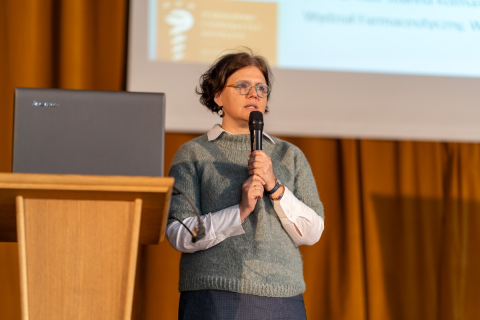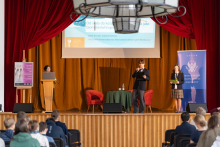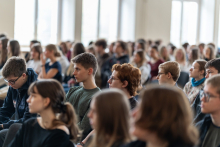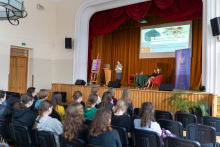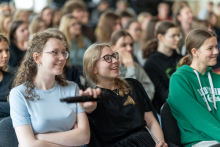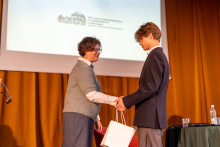Professor Joanna Kolmas works at the Chair and Department of Pharmaceutical Chemistry and Biomaterials at the MUW Faculty of Pharmacy. Her research is mostly focused on studying the structure and physicochemical properties of natural and synthetic calcium phosphates, as well as on developing new bioceramic and composite materials that could potentially be used to treat conditions that affect mineralized tissues.
She started the meeting with high school students by emphasizing that pharmacy was not only about working at a generally available or hospital pharmacy, or at a pharmaceutical company, but that it might also offer broad research opportunities.
Minerals and their significance
Professor Kolmas talked about minerals, their structure and diversity. She pointed out that so far, about 5500 minerals had been discovered on Earth, of which only about 250 form rocks.
“A mineral is an inorganic chemical compound that consists of one or more elements,” she explained. She also emphasized that minerals have a crystal structure and are solid.
Calcium phosphates and their applications
The lecture focused on calcium phosphates and their uses in medicine. Professor Kolmas discussed various compounds from this group, such as hydroxyapatite, brushite or monetite, and their significance in biomaterial engineering.
“Calcium phosphates may be useful in the production of various biomaterials in the form of moulding, granules or cements, which could serve as fillers in bone tissue defects. They may also serve as excellent coating for metallic implants, which improves their integration with the bone,” she explained.
Apatites and their role in the human body
Professor Kolmas also offered a detailed discussion of apatites, which are minerals present in bone tissue and the mineralized tissues in the tooth, where they have an important role in their structure and determine their properties.
Biomaterials – types and opportunities
The lecture was rounded off with a discussion of calcium phosphates and their uses in medicine. The speaker presented various types of composite and ceramic biomaterials.
“You can create multifunctional biomaterials, which may serve as drug delivery systems,” she emphasized.
A Q&A session
Professor Kolmas ended her presentation by encouraging students to continue exploring topics related to pharmacy, and also invited them to visit the Faculty of Pharmacy.
“Pharmacy is a very broad discipline, and I hope to have proved this, even if I only showed you its small sub-field,” she summed up.
The lecture was followed by a Q&A session, during which students could learn more about the topics covered during the speech.
The event took place in the Władysław IV High School on April 11. It was attended by about 150 first-, second- and third-year students who follow exact science courses (Biology with Chemistry, and Mathematics and Physics).
